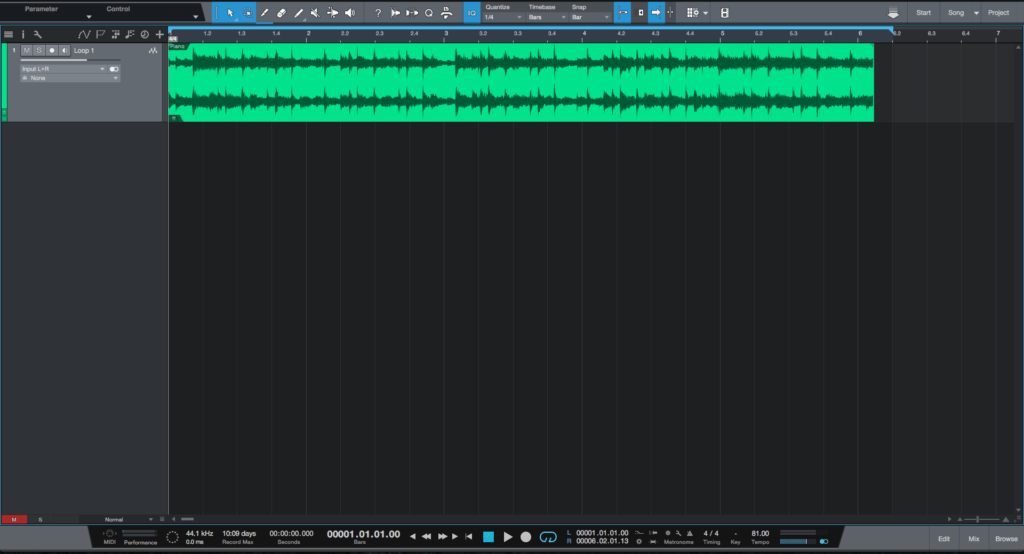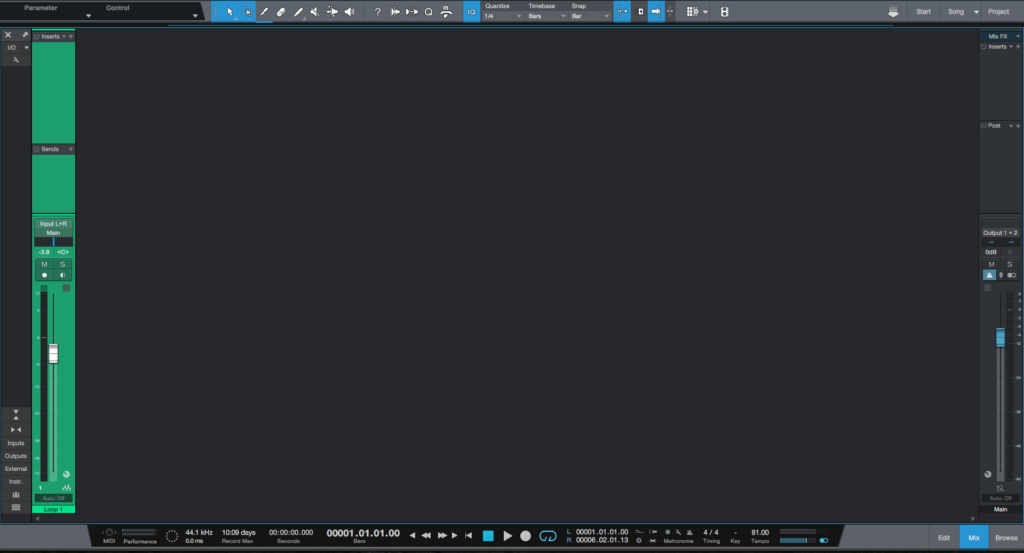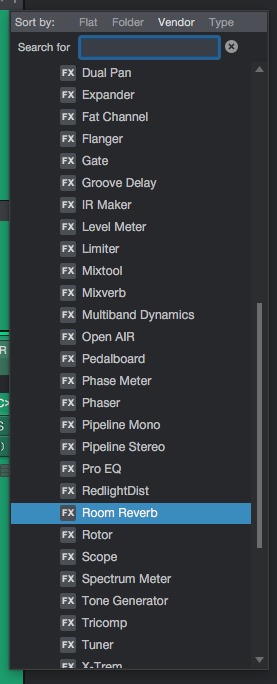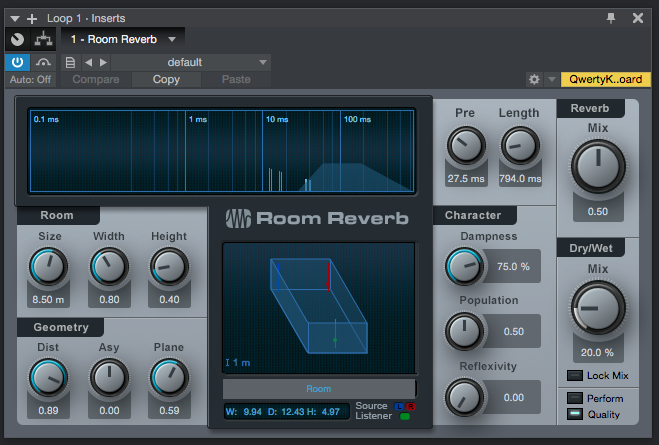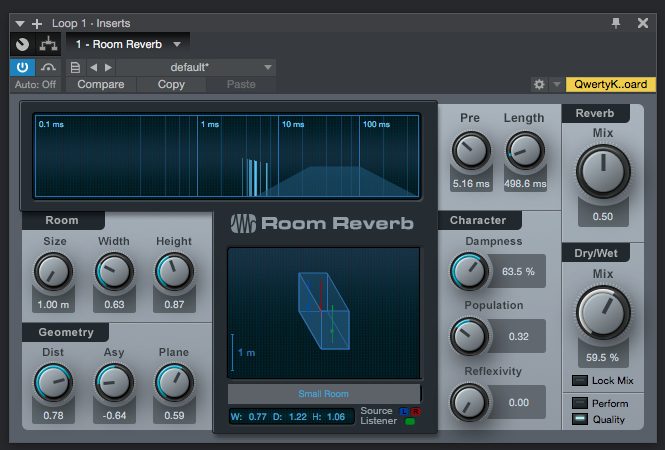The following tutorial shows the user How to use Room Reverb in Studio One.
Need a Pro Audio laptop or Desktop PC to run Presonus Studio One 4 software and all of its features at its best? Check out our pro audio PCs at PCAudioLabs.
On the modern days of audio mixing, the digital tools that engineers use in order to shape the recorded sound are called Plugins. Plugins can emulate the behavior of vintage analog pieces of gear, or simply act as clean/linear digital signal processors, performing tasks such as equalization, compression, limiting, expansion, gating, time-domain effects, etc. Studio One 4 comes with a variety of proprietary plugins that can help the user mix a music production completely “in-the-box”.
One of the most used processors that come with Studio One is the Room Reverb, which can be defined as tool that simulates the reverberation characteristics of a room by adjusting its internal reverb parameters based on virtual room models.
For the purpose of this tutorial, we will explain how to use the Presonus Room Reverb plugin in Studio One 4:
- Open or create a new Studio One 4 song:
2. Open and maximize the MIX tab:
3. From the inserts list of the track, select “Room Reverb”:
The Room Reverb plugin window will open as:
It is easy to see from the previous picture, the Room Reverb plugin has several parameters that can be explained as:
- Size: This knob adjusts the average size of virtual room model.
- Width: This knob adjusts the width relative to the size.
- Height: This knob adjusts the height relative to the size.
- Dist: This knob adjusts the relative distance between the listener position and the source within the room.
- Asy: This knob adjusts the left/right asymmetry between the listener position and the source.
- Plane: This knob adjusts the relative height of the listener position and the stereo source.
- Pre: This knob adjusts the offset for room-derived natural predelay amount.
- Length: This knob adjusts the offset for room-derived natural reverb tail.
- Dampness: This knob adjusts the relative humidity of the air in the room.
- Population: This knob adjusts the relative amount of population in the virtual room.
- Room Model: This lets the user select a reverb model, such as Small Room, Room, Medium Hall, and Large Hall
- Reverb Mix: This knob adjusts the reverb tail and early reflections mix.
- Dry/Wet Mix: This knob adjusts the contribution of the affected vs unaffected reverb signals.
- Perform/Quality: Quality mode is selected by default. If the user selects Perform mode, the Room Reverb effect will consume less CPU resources.
For the purpose of this tutorial, we will use the Room Reverb to emulate a small room. The Room Reverb will be set as:
- Size: 1m.
- Width: 0.63.
- Height: 0.87.
- Dist: 0.78.
- Asy: -0.64.
- Plane: 0.59.
- Pre: 5.16 ms.
- Length: 498.6 ms.
- Dampness: 63.5%.
- Population: 0.32.
- Room Model: Small Room
- Reverb Mix: 0.5.
- Dry/Wet Mix: 59.5%.
- Perform/Quality: Quality.
4. Apply the previous configuration, and the Room Reverb plugin should look like this:
At this point we have successfully explained how to use and configure the Room Reverb plugin in Studio One 4. The tutorial has now finished.
Using Presonus Studio One 4 software to produce music would be ideal with one of our professionally designed PCAudioLabs Systems due our high-performance specifications in order to work with any of the Digital Audio Workstations supported. If you would like to order one of our PCAudioLabs computers, please call us at 615-933-6775 or click this link for our website.

